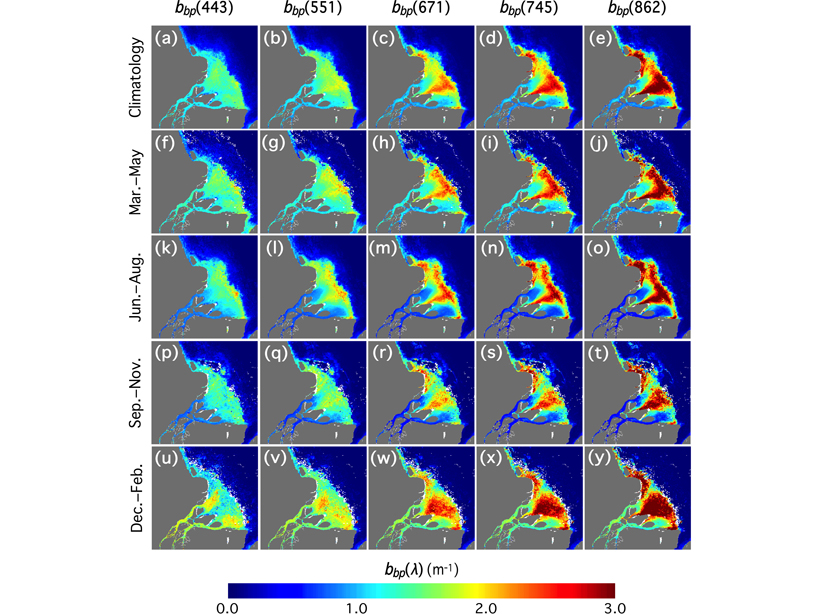Source: Journal of Geophysical Research: Oceans
Satellite ocean color products derived from visible wavelengths have improved understanding of global and regional ocean optical, biological and ecological processes. However, in coastal regions, particularly highly turbid coastal waters, there continue to be challenges in deriving accurate ocean color spectra in the wavelengths between blue and the near-infrared, as well as ocean biological parameters. These challenges stem mainly from two causes: errors in the atmospheric correction process, and unsuitable algorithms for ocean biological parameterization retrievals. Shi and Wang [2017] demonstrate a significant advance in satellite ocean color processing in terms of the derived algorithm for particle backscattering and the scientific results obtained from the Visible Infrared Imaging Radiometer Suite (VIIRS). In particular, this study for the first time characterizes and quantifies highly turbid coastal and inland waters from VIIRS observations. This work should be of the interest to ocean studies related to the development of ocean color algorithms, satellite oceanography, coastal and estuary ecosystems, ocean modeling, and coastal and inland water quality.
Citation: Shi, W., & Wang, M. [2017]. Characterization of particle backscattering of global highly turbid waters from VIIRS ocean color observations. Journal of Geophysical Research: Oceans, 122, 9255–9275. https://doi.org/10.1002/2017JC013191
—S. Bradley Moran, Editor, JGR: Oceans
Text © 2018. The authors. CC BY-NC-ND 3.0
Except where otherwise noted, images are subject to copyright. Any reuse without express permission from the copyright owner is prohibited.

